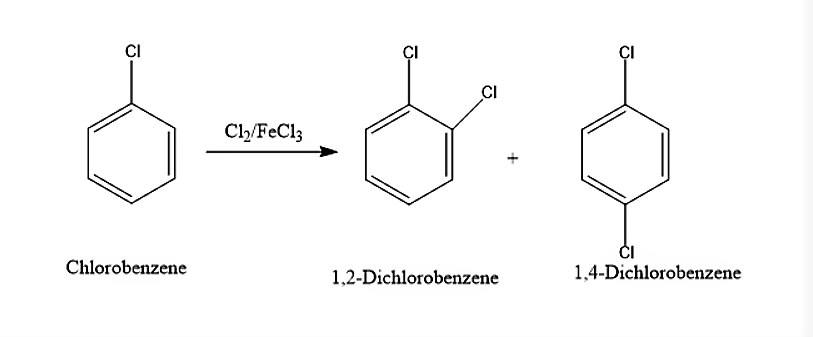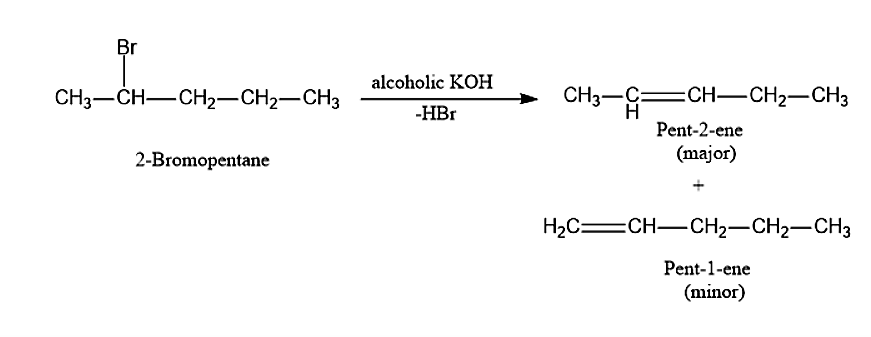
What happens when
(i) Chlorobenzene is treated with
(ii) Ethyl chloride is treated with
(iii) 2-bromopentane is treated with alcoholic KOH?
Write the chemical equation in support of your answer.
Answer
466.2k+ views
2 likes
Hint: In the first reaction, when chlorobenzene reacts with
In the second reaction, Ethyl chloride is reacted with
In the third reaction, 2-bromopentane is treated with alcoholic KOH, will follow Saytzeff’s rule and undergo
Complete step by step answer:
(i) When Chlorobenzene is treated with

(ii) When Ethyl chloride,

(iii) When 2-bromopentane is treated with alcoholic KOH it will follow Saytzeff’s rule and will undergo

Therefore,
(i) When Chlorobenzene is treated with
(ii) When Ethyl chloride is treated with
(iii) When 2-bromopentane is treated with alcoholic KOH, it will give Pent-2-ene as the major product and Pent-1-ene as the minor product.
Note: According to the Saytzeff’s rule, when dehydrohalogenation reaction takes place and the most stable product will be that alkene i.e., 2-pentene, which has largely substituted alkene group in it. The less substituted alkene will be the minor product and also called the Hofmann product.
In the second reaction, Ethyl chloride is reacted with
In the third reaction, 2-bromopentane is treated with alcoholic KOH, will follow Saytzeff’s rule and undergo
Complete step by step answer:
(i) When Chlorobenzene is treated with

(ii) When Ethyl chloride,

(iii) When 2-bromopentane is treated with alcoholic KOH it will follow Saytzeff’s rule and will undergo

Therefore,
(i) When Chlorobenzene is treated with
(ii) When Ethyl chloride is treated with
(iii) When 2-bromopentane is treated with alcoholic KOH, it will give Pent-2-ene as the major product and Pent-1-ene as the minor product.
Note: According to the Saytzeff’s rule, when dehydrohalogenation reaction takes place and the most stable product will be that alkene i.e., 2-pentene, which has largely substituted alkene group in it. The less substituted alkene will be the minor product and also called the Hofmann product.
Recently Updated Pages
Master Class 9 General Knowledge: Engaging Questions & Answers for Success

Master Class 9 English: Engaging Questions & Answers for Success

Master Class 9 Science: Engaging Questions & Answers for Success

Master Class 9 Social Science: Engaging Questions & Answers for Success

Master Class 9 Maths: Engaging Questions & Answers for Success

Class 9 Question and Answer - Your Ultimate Solutions Guide

Trending doubts
Give 10 examples of unisexual and bisexual flowers

Draw a labelled sketch of the human eye class 12 physics CBSE

Differentiate between homogeneous and heterogeneous class 12 chemistry CBSE

Differentiate between insitu conservation and exsitu class 12 biology CBSE

What are the major means of transport Explain each class 12 social science CBSE

Why is the cell called the structural and functional class 12 biology CBSE




